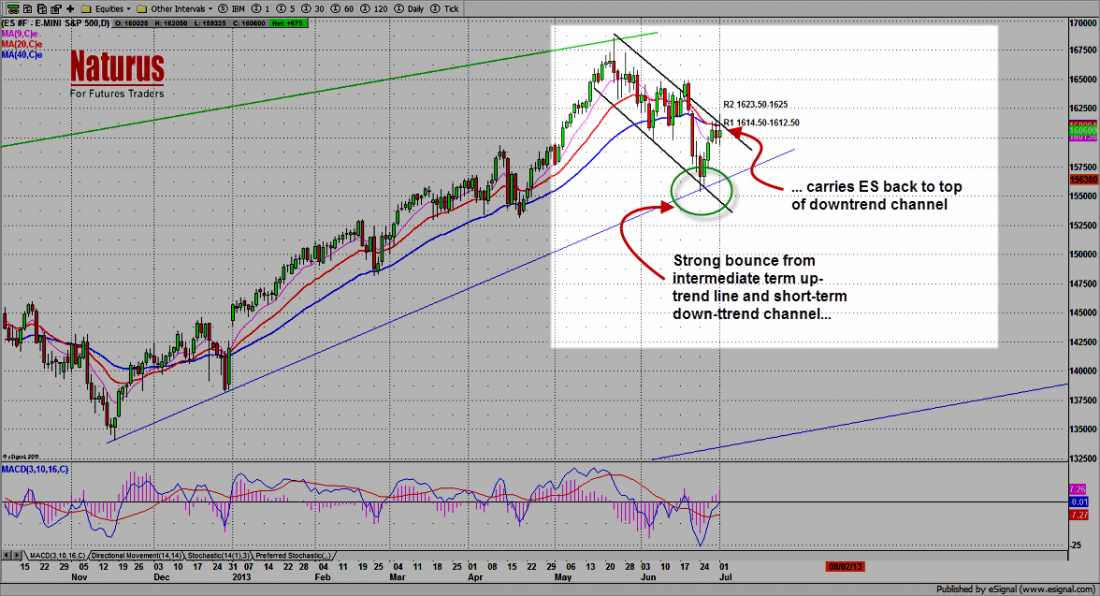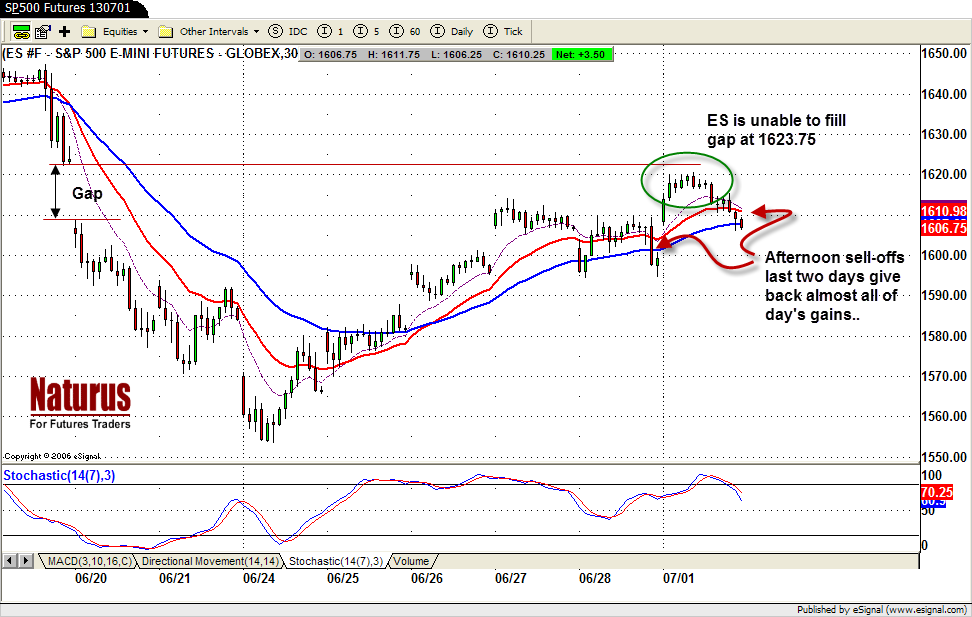The large-cap stocks, as measured by the Standard and Poor 500 index, have had a tremendous four-year rally, thanks mainly to the Federal Reserve’s quantitative easing policies.
From the low at 666 in 2009, the index moved to a new all-time high last May above 1680. And for all of that rally, the best strategy for traders was to simply buy the dips. Every time the market pulled back, you could make money by going long the futures contract.
Now there are signs the party may be over. The S&P is approaching a decision point, and buying the current dip suddenly begins to look like a high-risk trade. Here’s what’s happening.
LONG-TERM UP-TREND IS STILL INTACT
The long-term daily chart shows that the up-trend is still intact. But the short-termchart shows the current bounce is stalling.
S&P500 futures, daily bars

Since the May high, the S&P has been in a downtrend channel. Two weeks ago it hit the bottom of the channel, which coincided with the intermediate-term uptrend line, and bounced decisively back to the top of the channel.
NOW WHAT?
So far so good. But the bounce failed to move outside the downtrend channel, which makes traders nervous. And the short-term chart has a couple of things that make traders more than nervous: scared. Look for yourself.
S&P500 futures, 30-minute bars

On Monday the futures made a fake break-out above the down-trend channel but quickly pulled back in the afternoon – a disturbing pump-in-the-morning-dump-in-the-afternoon pattern that is becoming common in intra-day trading.
Even more disturbing, the futures were unable to fill an important gap at 1623.75, and fell back sharply after the failed attempt.
Taken together, both signals demand caution, especially in a week when after Wednesday at 1 p.m. most professional traders will be out of the market until Monday. Friday is loaded with economic reports that will send the market spinning.
Make no mistake: our long-term view remains bullish. But for the short-term, it looks like this bounce is failing.
HOW TO TRADE IT
The resistance around 1623-25 is the key. If the futures can manage to close above that level, the market should move higher. If the ES can’t fill the gap and move past that level, we will be looking for short-term entries on the short side.
= = =
Naturus is the web-name of Polly Dampier, who is the brains behind Naturus.com, where she gives active traders real-time market guidance. For more information on her index futures trades, visit www.naturus.com




